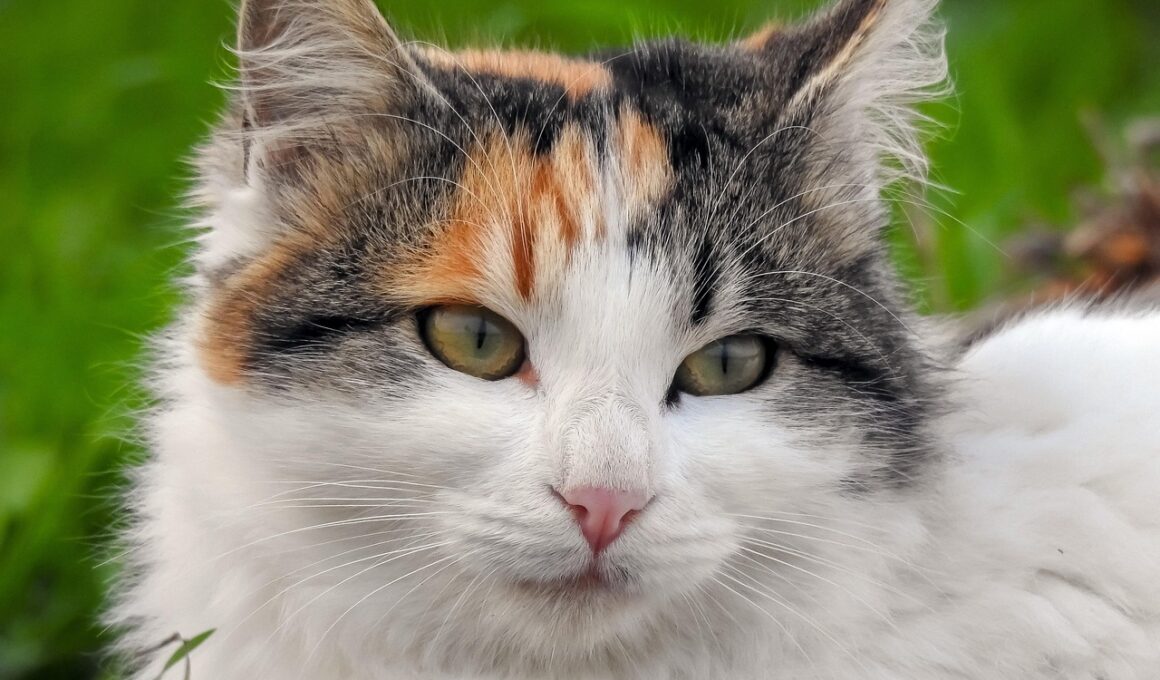Dealing with Vaccine Hesitancy in Stray Cat Communities
Vaccination is essential for protecting the health of stray cats, contributing to community health, and controlling disease spread. However, vaccine hesitancy exists in many communities, leading to lower vaccination rates. Several factors contribute to this hesitancy, including misinformation and cultural beliefs regarding vaccinations. Community outreach efforts should aim to debunk myths and provide accurate information about the benefits of vaccines. Engaging local veterinarians and animal welfare organizations in these efforts can significantly help. These professionals can offer workshops, informational flyers, and open Q&A sessions to discuss vaccination misconceptions. Social media campaigns can also be an effective tool to reach a broader audience and foster trust. By emphasizing the importance of vaccines, the community can collectively improve the health of stray cat populations. Additionally, offering incentives for vaccinations, like free health checkups or food supplies, can motivate owners to participate. These strategies are vital for addressing vaccine hesitancy and ensuring the well-being of stray cats in the community.
One effective method to combat vaccine hesitancy is educating stray cat caregivers on the dangers of common diseases that vaccinations prevent. When caregivers understand the risks associated with diseases such as rabies, feline viral rhinotracheitis, and calicivirus, they may be more inclined to vaccinate their cats. Workshops and seminars can provide vital information on how these diseases affect cat populations and human health. Well-structured programs can feature expert speakers sharing personal stories and experiences with stray cats. Demonstrations on administering vaccines and proper healthcare practices can also be incredibly beneficial. These hands-on activities encourage participation and foster an environment where questions and concerns are welcome. By creating a supportive community atmosphere, caregivers may feel more empowered to make informed decisions about vaccinating stray cats. Collaborating with local shelters to create outreach events emphasizing the importance of vaccinations can also draw attention. Offering free vaccines at these gatherings can significantly increase participation while removing financial barriers. Community alliances can ultimately help achieve higher vaccination rates and contribute positively to the health of stray cat populations.
Overcoming Cultural Barriers
Understanding and overcoming cultural barriers is crucial in addressing vaccine hesitancy within varied communities. Some individuals may harbor traditional beliefs about the efficacy of vaccinations, making them skeptical about modern veterinary practices. These beliefs can stem from historical experiences or mistrust of medical professionals. To address this, it is essential to approach the topic with sensitivity and respect for cultural norms. Engaging community leaders or local influencers to promote vaccines can bridge the gap between veterinary services and wary communities. Culturally tailored educational materials can help displace fear, emphasizing how vaccinations benefit not only the cats but also the community at large. Fostering open dialogues that allow individuals to express their concerns can build trust. Creating partnerships with local businesses or faith-based organizations to co-host vaccination drives can also increase participation. Ultimately, respect and understanding should guide efforts to educate different communities about the significance of vaccinations. It is a critical component fostering active engagement and support for the welfare of stray cats and their health.
Providing access to veterinary services can directly reduce vaccine hesitancy in stray cat communities. Many individuals may be willing to vaccinate their cats but face barriers such as transportation or financial constraints. Community pop-up clinics can strategically address these issues by bringing services directly to neighborhoods. These clinics can offer vaccinations at reduced costs or even for free. It is imperative that clinics are well-promoted to create awareness among residents. Collaborations with local sponsors can help fund these initiatives. Health fairs often draw a crowd, making them ideal for offering various services, including vaccines, wellness checks, and educational sessions. By creating supportive environments that offer easy access, communities can eliminate some hurdles to vaccination. Furthermore, leveraging local volunteers to assist with these events reinforces community unity. Volunteers can help educate caregivers about the benefits of vaccination and how to care for their stray cats properly. Training volunteers to handle concerns or questions can positively impact the overall success of vaccination initiatives and ensure the welfare of stray cat populations.
Incentive Programs for Vaccination
Incentive programs can motivate individuals to vaccinate their stray cats, directly combating vaccine hesitancy. Effective programs can include offering free or discounted vaccines for those who bring in multiple cats. Involving local businesses to provide gift cards or discounts on products can further entice caregivers. These strategies create mutually beneficial relationships that foster community support. Additionally, marketing these programs effectively can draw attention to their importance. Distributing flyers in community centers or posting on social media can spread awareness. Holding friendly competitions that reward households for vaccinating their cats can also boost participation rates. A community tableau showcasing vaccination stories creates emotional connections and can inspire others to act. Proper documentation of participants in these programs can highlight successes and display the positive impact of community engagement. It can also encourage people to take action and spread the news about vaccinations. By rewarding participation, communities can amplify the message of vaccination and its significance in safeguarding stray cat health for the benefit of all.
Engaging young people in vaccination efforts can effectively reduce vaccine hesitancy. Schools and youth organizations can partner with local veterinary professionals to instill the importance of stray cat health early on. Programs can involve educational field trips to shelters, illustrating how stray cats can affect the community. Introducing projects where students are given responsibilities for community cats teaches them about care, compassion, and health. Moreover, students can create campaigns that advocate for vaccination and proper healthcare practices. Collaborating with teachers can help incorporate animal health topics into curricula, ensuring young people understand the consequences of neglecting stray cat vaccinations. Such initiatives foster goodwill towards stray animals and encourage students’ families to take action. Clubs centered around animal welfare can undertake community projects that promote vaccination drives. These clubs may organize fundraising events to support vaccination efforts or awareness campaigns, which effectively engage local communities. By inspiring the youth, communities can create long-term advocates for stray cat health, highlighting the importance of vaccinations. These initiatives lead to sustainable improvements in public perceptions and behaviors regarding stray cat vaccinations.
Conclusion: Building a Healthier Community
Addressing vaccine hesitancy in stray cat communities is a multifaceted approach that combines education, outreach, access, and cultural sensitivity. Understanding the reasons behind hesitancy allows communities to devise tailored strategies that resonate. By fostering a culture of compassion and proactive healthcare, more individuals will undoubtedly see the value in vaccinations. Collaborative efforts, including the sponsorship of incentive programs and targeting community engagement through schools, are vital for removing barriers and misconceptions. The role of local veterinarians and animal welfare advocates cannot be understated in this ongoing effort; their expertise is crucial in providing accurate information and support. Ultimately, a united community dedicated to the well-being of stray cats will see improved health outcomes for these animals and enhanced public awareness of responsible pet ownership. Sustained partnerships between organizations can also lead to more comprehensive programs and resources to assist communities. As vaccine rates improve, so does the overall health of the stray cat population, paving the way for future initiatives centered on animal care, compassion, and sustained education efforts. Together, communities can build a healthier future for both stray cats and the environment.
Creating lasting change takes time but can significantly impact the future health and welfare of stray cats. Engaging the segment of the population that interacts with these animals will ensure their voices are heard. Improving vaccination rates and understanding within these communities may foster a deeper sense of responsibility and compassion towards stray cats. As knowledge spreads, real transformations can begin to emerge within neighborhoods benefiting both cats and humans alike. Together, the combined efforts of engaged residents, local organizations, and caring individuals can lead to a unified stand against common obstacles. Addressing vaccine hesitancy effectively requires ongoing commitment and adaptability. Celebrating successes, learning from challenges, and fostering an environment where everyone can participate are key elements that will shape the future. Communities that prioritize the health of stray cats ultimately create better conditions for all residents and enhance overall community well-being. This becomes a testament to collective responsibility, compassion, and mutual support for welfare initiatives. The journey toward higher vaccination rates is just the beginning. Ultimately, the aspiration for healthy, thriving stray cat populations will continue to guide these efforts well into the future.


